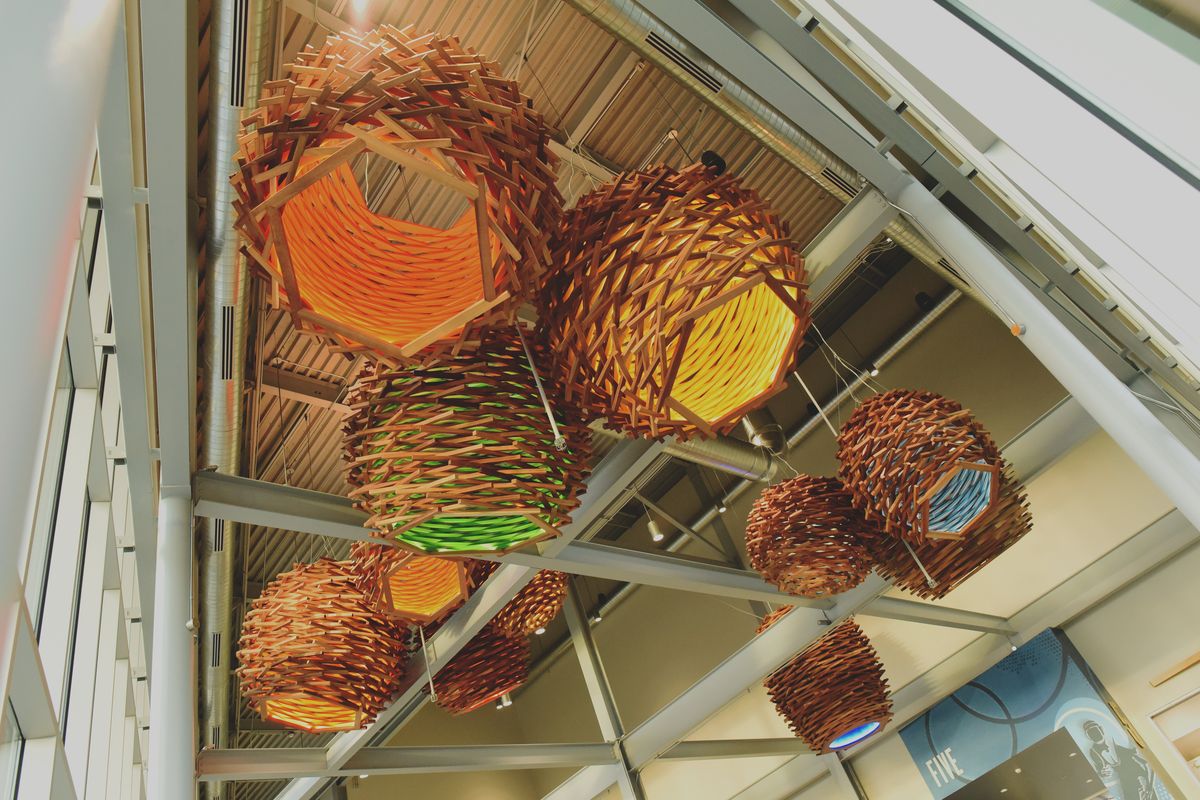WSU professor Taiji Miyasaka, Seattle artist Clayton Binkley create light installation at the Podium

Washington State University professor Taiji Miyasaka and Seattle artist and engineer Clayton Binkley joined forces in the summer of 2020 when a call went out for an overhead lighting art installation at the recently completed the Podium sports complex in Spokane.
Since working on another installation at Seattle’s Mad Art Gallery, Miyasaka and Binkley had been on the lookout for another opportunity to collaborate. So when the sports complex project presented itself, they jumped at the chance to apply.
The project was commissioned by the Spokane Public Facilities District and administered by Spokane Arts from start to finish.
Drawing inspiration from several geologic formations in the Spokane area, the design embodies their shared interest in the “atmospheric quality of light and how it affects people’s mood and perception of space.”
As sawmills shut down over the course of the pandemic, finding new materials proved difficult and expensive. So the team pivoted to look for other options. Instead of full-length boards, Miyasaka and Binkley came up with a plan to use offcuts – still high-quality, but too short to sell as full-length boards.
Suspended by stainless steel cables, the structures are built primarily from reclaimed western red cedar cut into regular hexagons and stacked spirally, one on top of the other, to create partial ellipsoid cylinders. The interior of each of these large pine cone-like figures is painted one of several colors off of which their individual lighting elements reflect to create a multicolored display.
Their goal was to create a dynamic piece that could adapt to produce the right ambience for each time of day, “that the solid materiality of the elements as seen during the daytime (might be) transformed into a softer texture by light in the evening as night falls; almost dematerializing them into pure color.”
The paint used to color each figure is a type of plaster made from recycled drywall waste that Miyasaka is researching and developing through his academic work alongside David Drake at WSU.
The installation, titled “Chromasphere,” features 11 light fixtures arranged in three distinct clusters. The largest of these figures, scaled to compete with the expansive sport complex, measures 12 feet tall and 9 feet in diameter; the smallest is spherical, measuring 4 feet in diameter.
“The figures are ordered and geometric, but they feel very organic at the same time,” Binkley said, referring both to the design and to how the viewing experience changes over the course of the day. “When the sun rises and the light comes through them, they have a very different presence to when the sun has moved around to the west,” he said.
Miyasaka and Binkley hope visitors are intrigued enough by the piece to take a moment and look up. “Most people who come to the Podium will not be coming to visit the artwork, so it has the potential to add something exciting and unexpected to their experience,” Miyasaka said.
For more information, visit spokanesports.org/podium.